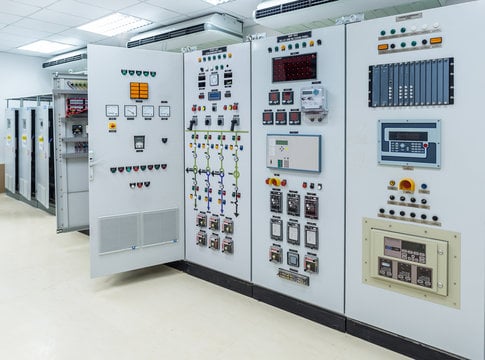When a gas is exposed to a voltage greater than its insulating capabilities, electrical arcs result. The arc begins when the voltage is high enough to ionize the space between the conductors. A gas becomes a great conductor when it is ionized, allowing current to flow and producing the arc-shaped current known as an arc flash. An unintentional electrical discharge that results in a fire is known as an arc fault.
- Arc blasts are high-pressure waves that are capable of ejecting molten metals and shrapnel.
- Arc flashes have tremendous temperatures that create blinding light and deafening noise.
- toxic vapors
Arc flash dangers may seriously damage electrical infrastructure and the industrial sector. These are some of the commercial losses brought on by arc flash risks.
- Additional expenses for worker compensation, medical care, rehabilitation, accident investigation, and production downtime.
- Litigation-related legal fees and judgments, fines, insurance premiums, repair costs, and employee replacement expenses.
- A damaging effect on the brand and reputation of the business
- Loss of business opportunities is brought on by a history of accidents that might result in the cancellation of an electrical license.
Causes of Arc Flash:
- Conductor insulation failure.
- exposed live parts.
- human error.
- improper switch and circuit breaker maintenance.
- the presence of water closes to the equipment.
- obstructed disconnect panels.
- high-voltage cables.
- electrostatic discharge.
- damaged tools and equipment.
Methodology for Arc Flash Analysis:
When high-voltage or low-voltage, high-current switching takes place, there is a possibility of an arc flash.
Phase 1: ascertain the risk of an arc flash:
- Perform an arc flash/fault study or analysis, which should include data collection, software-based power system modeling, short circuit analysis, overcurrent protective device coordination study, arc flash analysis, and arc flash evaluation.
- Assessment of the likelihood that a worker might be exposed to an arc flash.
Phase 2: Deal with the Risk
- Limiting worker engagement with electrified equipment to prevent worker exposure to arc flash hazards.
- Manual systems should be avoided in favor of automated ones.
- To shield workers from possible risks, place physical barriers between them and powered equipment.
Phase 3: Engineering Control:
- Reduce fault current to lower incident power.
- Methods for arc flash detection and prevention.
- Remote control devices and automation.
- The switchboard should be upgraded or modified.
- Permanent circuit breakers should be installed.
- Bus bars should be insulated.
- Blown fuses should be replaced.
Phase 4: administrative controls:
- Labeling plants, switch rooms, and other pertinent locations to denote incident energy levels.
- Marking the limits of the arc.
- Capturing arc flash diagrams and data.
- Putting in place secure guidelines and practices to minimize vulnerability.
- Putting incident energy and PPE levels into practice.
Phase 5: personal protective equipment (PPE).
- Despite being the least effective, personal protective equipment can lower an accident’s severity but cannot stop it. The type of personal protective equipment (PPE) used depends on how intense the incident is.
CareLabs provides a solution for every threat connected to arc flashes. Professionals with the necessary skills and expertise can assess potential arc flash hazard risks and provide effective mitigation and control measures to safeguard your workers and property.
Benefits of Carelabs Service
- More secure power systems that adhere to legal requirements.
- Electrical systems that are fully integrated save time and money.
- Create a more secure work environment.
- Provide quick solutions in an emergency.
- Expand safety margins.
- Save time by automatically generating work permits and arc flash labels.
- Avert possible fines and legal fees.
To guarantee that our experts are accessible in the event of a routine or urgent emergency, CareLabs has crew members stationed in many locations. CareLabs has gained a clientele with a solid reputation and positive reviews while quickly establishing itself as an ISO 9001:2008-accredited organization.
Paris, Marseille, Lyon, Toulouse, and Nice are just a few of the major cities where CareLabs offers arc flash investigation and analysis services.




